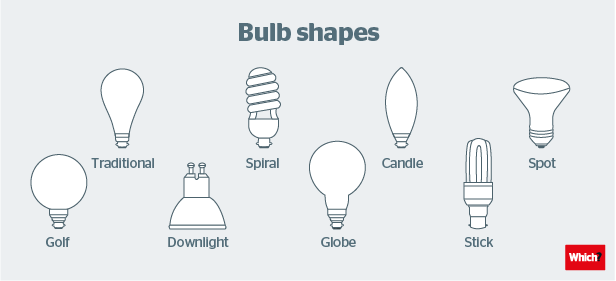How do I buy the correct lamp/bulb?
Before you buy a new light bulb, read our top tips to avoid a costly mistake.
The light bulb market has gone through enormous change since traditional incandescent bulbs were removed from the market and replaced with energy-saving bulbs. Below, we walk you through what you need to know to buy the best bulb for your needs.
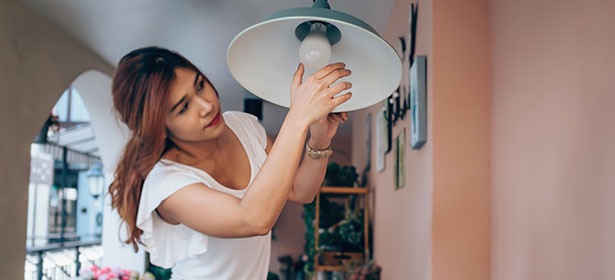
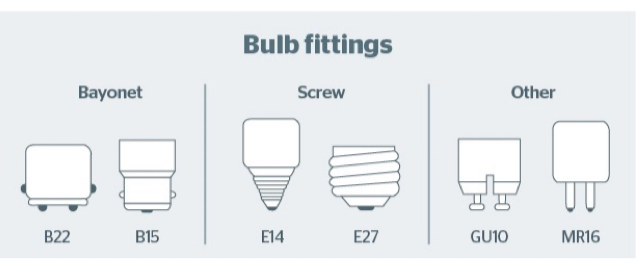
They could save you hundreds in the long run. There are three main types of regular light bulb - CFLs (compact fluorescent lamp - the standard type of energy-saving light bulb), halogens or LEDs. For a quick guide, below is a summary of each and how much a typical 700+ lumen bulb might cost you per year if you have it on for around three hours a day.
CFL annual running cost £2.04
CFLs are cheap and widely available in a range of sizes and outputs. Some older CFLs were slow to brighten, but this has improved considerably in recent years. They are four times more efficient than incandescent bulbs and quickly pay for themselves in energy savings – but not everyone likes the light they emit.
Halogen annual running cost £8.42.
Light from a halogen bulb is similar to an incandescent in colour and quality, as both use a tungsten filament. There’s little difference between the two in the amount of energy used and halogens are significantly more expensive to run than other energy savers. With an expected life span of less than two years, a halogen bulb is unlikely to pay for itself before it fails.
LED annual running cost £1.71
These use almost 90% less energy than a traditional incandescent, making them the most energy-efficient type of lighting. LEDs are usually more expensive to buy, but can last up to 25 years. In the long term they are the cheapest option. An LED could save you more than £180 in energy use over its lifetime, compared with an old-style incandescent bulb.
3. Get the right light bulb brightness and colour.
Decide what type of light you'd prefer. This breaks down simply into brightness, otherwise known as watts or lumen output; and the colour of the light, measured on the Kelvin scale. Don’t be put off by these technical terms – here is a short explanation of each.
Watts and lumens (brightness) In the past, when nearly everyone filled their homes with incandescent bulbs, brightness was measured in watts - which is actually a measure of power. Since the introduction of energy-saving bulbs, this is a less useful measure of brightness, as new bulbs use a lot less power to produce the same amount of light. So, instead, light output is measured in lumens. Remember, the higher the number of lumens the brighter the light.
Use this chart to see equivalent watt and lumen output for old-style incandescent and the three types of energy-saving bulbs (LEDs, halogens and CFLs).
As a rough guide, around 400 lumens would be suitable for a bed-sized table lamp, whereas you might want between 1,500 and 3,000 lumens in total (from more than one bulb) for a good-sized living room.
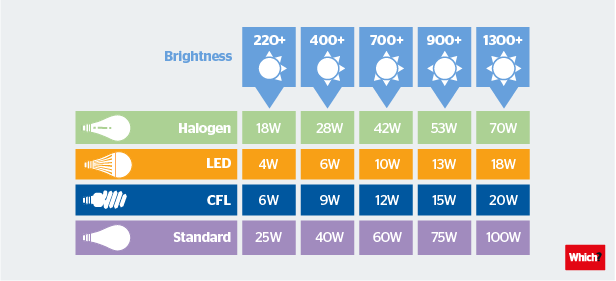
Now you have decided on how bright you want your bulbs, you need to decide on the colour of the light. Kelvin scale (colour of light) Many of us have felt the sinking feeling of getting a new bulb home, switching it on and being bathed with a stark white or bluey light that's more akin to a trip to A&E than a warm cosy living room. The colour of light is measured on the Kelvin scale, which is actually a measure of temperature. This is why light bulb manufacturers often refer to colour temperature on the packaging. Now we don't need to get into the ins and outs of the Kelvin scale in this guide, save to say that the numbers you see on the side of the bulb packet denote the colour of light that the bulb will emit. Most people have become used to the warm yellowy light given out by the old incandescent bulb, which is 2,700 on the Kelvin scale.
Midday sunlight is about 5,500k, sunset or sunrise lighting is around 2,500k and a candle is around 1,600k.
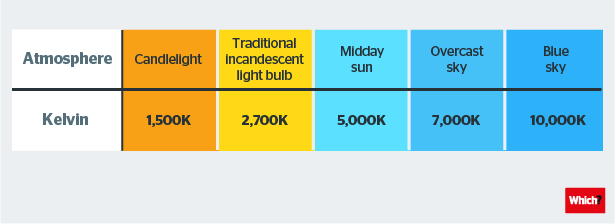
The colour of light can impact everything, from your mood to the colour of the vegetables on your chopping board, so it is important to get the colour of light that you prefer. Use the picture below to match the Kelvin scale rating with the colour you are after and go armed with this when you head out to buy your bulb. CRI (colour rendering index) To complicate matters further, each bulb is given a CRI score. CRI stands for Colour Rendering Index and is a measure of the ability of a light source to accurately represent different colours. Put simply, you want to make sure you get a bulb that makes your tomatoes look red, rather than a strange orangey colour. The image below shows the impact of CRI - the left-hand image is shot under light with a CRI value of 100, the image on the right is a CRI value of 80. Traditional incandescent and halogen bulbs have a near perfect CRI and score in the high 90s. LEDs and CFLs are a little behind this and are more likely to have a CRI value in the mid 80s. 80 is considered an acceptable level, although like many things it comes down to personal preference.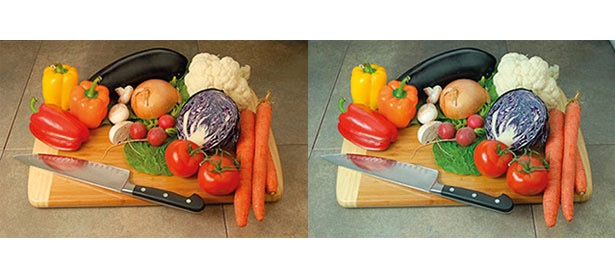
As you can see in the images above, there are a few errors in the colours in the right-hand image. The carrots are not quite as orange, the work surface appears slightly cold and blue and the green is also a subtly different shade. A CRI score of 80 is still pretty accurate and suitable for most lighting situations, however if you want a light to pick out a particular work surface or perhaps even a painting, you may want to pick a light source with a high CRI value.
4. Find the best shape
Now you have your bulb fitting and the colour and brightness in the bag, you will need to decide the shape of the bulb you want. Again, there is a bewildering variety and different brands have a subtly different look and characteristics. See the graphic, above, for the most common shapes. If you are just replacing a blown bulb, it's useful to take the old one to the shop to match it with ones on the shelves. Each of the different shapes provides a slightly different spread and angle of light, from the almost 360-degree spread of a globe or golf bulb, to the narrow beam of a spotlight. The 'right' shape of the bulb and spread of the light is essentially down to your personal preference, but do consider how the bulbs will look when they are switched off as well as on, and whether they will fit sensibly in their chosen location. For example, you wouldn't want a large stick shape if it will protrude from the top of your bedside lamp.
